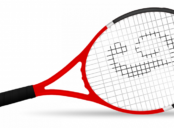Curling Paralympics Final: A Comprehensive Overview

Introduction to Curling Paralympics Final
The Curling Paralympics Final is one of the most highly anticipated events in the Paralympic Games. Athletes from around the world compete for the prestigious title of being the best curling team in the Paralympics. This thrilling event showcases the incredible skill, teamwork, and determination of athletes with physical disabilities.
Understanding Curling Paralympics Final

Curling Paralympics Final is a sport adapted from traditional curling to suit the needs of athletes with disabilities. There are two main types of curling played in the Paralympics: wheelchair curling and visually impaired curling.
Wheelchair Curling
Wheelchair curling is a Paralympic sport designed for athletes with mobility impairments. Players compete on a standard ice sheet and use a wheelchair equipped with handles for stability. The objective is to slide curling stones towards a target area called the ”house” and score points based on the stones’ proximity to the target. Wheelchair curling requires precision, strategy, and skillful maneuvering of the wheelchair.
Visually Impaired Curling
Visually impaired curling is a thrilling adaptation of curling for athletes with visual impairments. In this version, athletes with visual impairments throw specially designed audible stones down a tactile path. The team includes sighted guides who communicate with the players, guiding them on the path and providing information about the stone’s position and trajectory. This type of curling emphasizes communication, trust, and coordination between the players and their guides.
Quantitative Measurements of Curling Paralympics Final
The Curling Paralympics Final has seen a significant growth in popularity and participation over the years. According to recent statistics, there has been a steady increase in the number of countries participating in the event, reflecting the sport’s global appeal. Additionally, the viewership of curling during the Paralympics has reached record numbers, with millions of people tuning in to watch the intense matches.
Distinguishing Differences Among Curling Paralympics Finals
Although both wheelchair curling and visually impaired curling fall under the umbrella of curling Paralympics finals, they differ in various aspects. Firstly, the equipment used in each type is different, with wheelchair curling requiring specially designed wheelchairs, while visually impaired curling involves audible stones and tactile paths. Secondly, the level of physicality and technique required varies between the two types, with wheelchair curling demanding precise wheelchair maneuvering and visually impaired curling emphasizing effective communication and coordination.
Historical Overview of Pros and Cons of Curling Paralympics Finals
Over the years, the Curling Paralympics Final has evolved, and with it, the sport has experienced both advantages and disadvantages. One advantage is the increased inclusion of athletes with disabilities, providing them with a platform to showcase their talents and compete at an elite level. Additionally, advancements in equipment and technology have enhanced the overall experience for the athletes and viewers alike. However, challenges surrounding accessibility and funding continue to persist, limiting the growth and development of curling for athletes with disabilities.
In conclusion, the Curling Paralympics Final is a captivating event that celebrates the skill and determination of athletes with disabilities. The various types of curling played in the Paralympics, including wheelchair curling and visually impaired curling, offer unique challenges and opportunities for athletes to excel. As the sport continues to grow in popularity, it is crucial to address the historical challenges and work towards creating a more inclusive and accessible environment for the athletes. The Curling Paralympics Final is not just a sporting event; it is a testament to the power of determination, teamwork, and the human spirit.





















